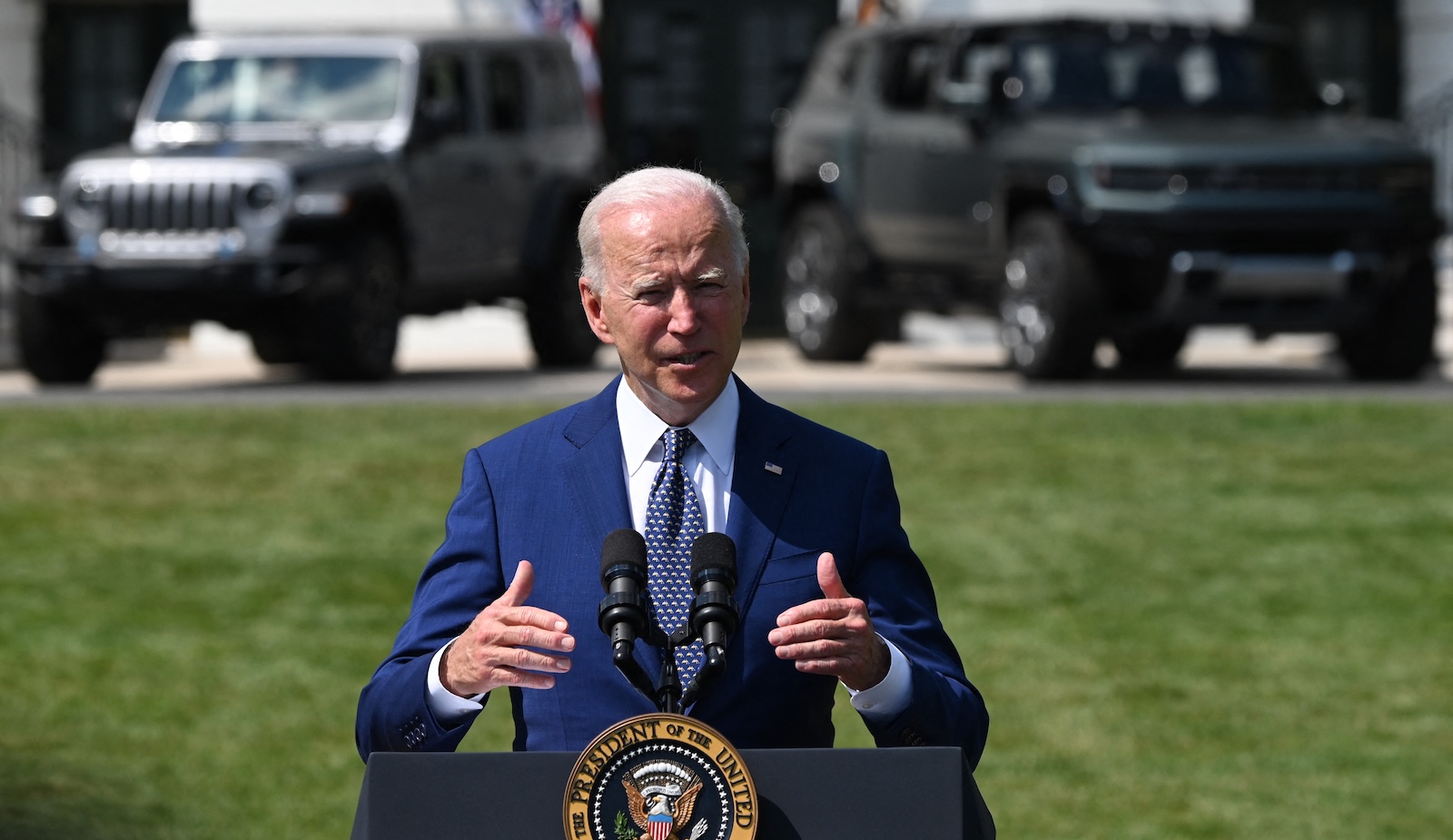“The future of the auto industry is electric,” President Joe Biden said in a voiceover to a video posted on Twitter Wednesday night. “There’s no turning back.”
Automakers seem to agree with him. On Thursday, the “Big Three” American carmakers — Ford, General Motors, and Chrysler (now part of the Dutch auto giant Stellantis) — announced a goal of having 40 to 50 percent of their new vehicle sales by 2030 be electric, in line with a new Biden executive order announced the same day. That would represent a giant step forward for the electrification of transport: Current EV sales in the United States have hovered around a paltry 2 to 3 percent of the total car market over the past several years.
The commitments are indicative of a larger change in the automotive industry’s mindset toward electric vehicles, led by the president’s strategic support. Biden has boosted EVs at every opportunity, driving around a racetrack in the electric F-150 Lightning and promising to build 500,000 electric vehicle charging stations. Encouraging American-made EV sales allows the president to tackle multiple objectives at once: fighting climate change, creating “good-paying, union jobs,” and outcompeting China. Labor groups appear to be getting on board as well: The United Auto Workers Union, which represents more than 400,000 workers in North America, released a statement supporting the 40 to 50 percent goal.
U.S. carmakers have already begun shifting toward electric vehicles. Ford recently released an all-electric Mustang EV, in addition to the much-anticipated electric F-150, and the company promised earlier this year to more than double its investments in electric and autonomous vehicles. General Motors has gone even further, planning to only sell electric vehicles by 2035.
While the new goal from the Big Three seems ambitious, some climate experts have pointed out that it may be less impressive than it appears. The switch to EVs is expected to happen rapidly as costs go down and consumers adjust: According to a Rhodium Group report, sales of electric vehicles are slated to reach 27 to 39 percent by 2031, even absent any new federal policy. Some states, including California and Massachusetts, have vowed to end the sales of gas-powered vehicles entirely by 2035.
And other Biden priorities on EVs are still hanging in the balance. In his American Jobs Plan, the president initially hoped to spend $174 billion on electric vehicle development and infrastructure, including $15 billion earmarked for his 500,000 charging stations. But the bipartisan infrastructure deal, agreed to last week by a group of Democratic and Republican senators, includes only $15 billion total for electric cars and buses, jeopardizing Biden’s promise of a U.S. EV market that could rival China and Europe. The president’s focus on having “point-of-sale” rebates for electric cars — instead of a flawed tax-credit system — has also been left out of the deal.
Still, the White House is forging ahead on other ways to cut emissions from transport. The Environmental Protection Agency and Department of Transportation also unveiled new fuel efficiency standards for cars and trucks Thursday, beginning the process of reversing President Donald Trump’s rollback of those standards during his presidency. The proposed rules require a one-time increase in fuel economy by 10 percent in 2023, followed by a 5 percent improvement annually through 2026. a That would mean automakers would have to reach a fleet-average 48 miles per gallon over the next 5 years.


